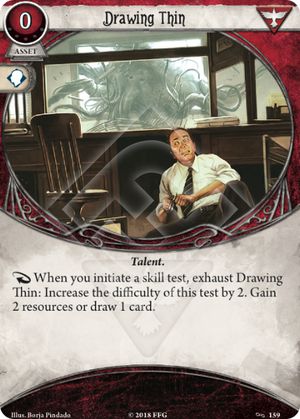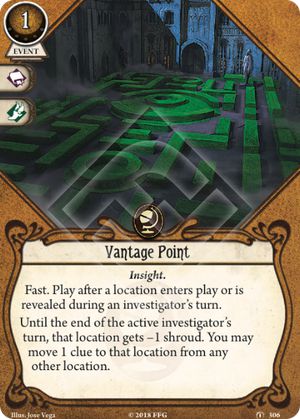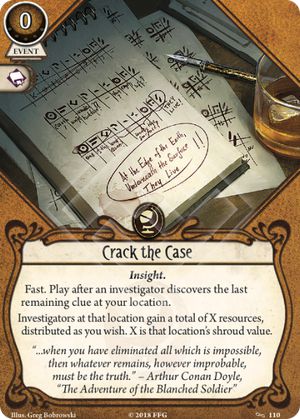
Out of interest, do we have clarification on when you get the resources ? I read it as being immediate, ie before the test is undertaken. This could be incredibly powerful if so. The synergy with certain cards would be incredible. For example, initiate a test at +2 gain two resources which you then spend for a +3 boost from Streetwise. You just made the test easier by one while not having to spend any resources. Alternatively, what's to stop you from having two of these in play and just ploughing through easy tests getting 2 resources and a card every time ? Agnes can take this and partner it with something like 6th Sense, where she's just investigating at her willpower level every time. This is likely to mean that she sits at 6 or 7 (or 8 with Dark Horse) on a regular basis and she can just plough through any shroud getting 2 resources and a card every time she does it.
I'm not sure I agree that it doesn't suit a Dark Horse build btw. There looks to be an obvious synergy with Fire Axe. Guarantees that you can power up a +4 boost every swing if the resources can be immediately spent. Also, it offers a way for a Dark Horse player to get a quick resource boost if they need to pay for an asset.
This is a great card. If it cost 2xp I'd buy it in a heartbeat. I'm surprised that it's available at level zero. Seems almost like an auto-include for any investigator with access to it who has a reliable way of passing a lot of tests.


